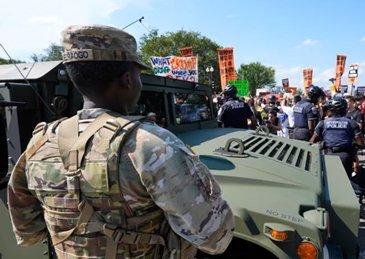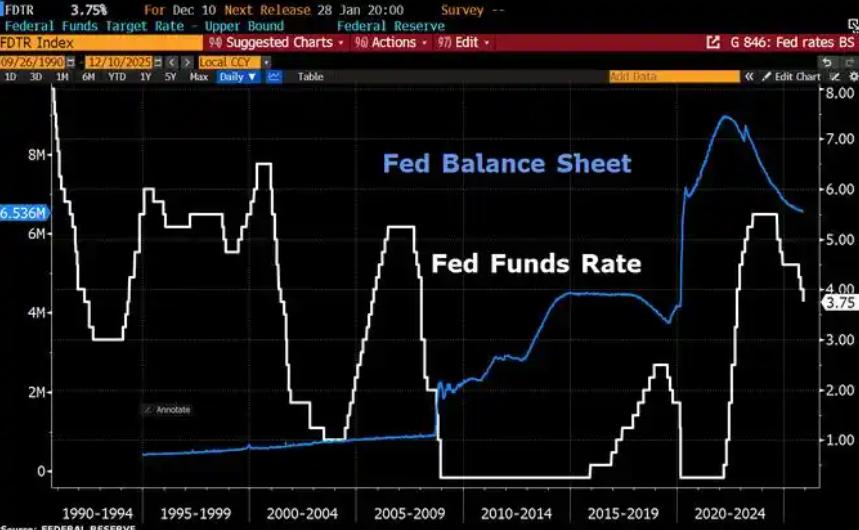
On August 16, 2025, hundreds of National Guard members from West Virginia, South Carolina, and Ohio arrived in Washington, D.C., joining the 800 federal troops already deployed earlier. As a result, the streets of the U.S. capital have seen the most densely packed military presence since the 2020 "Black Lives Matter" movement. This "law-and-order crackdown" led by the Trump administration is thrusting core issues such as the power boundaries between the federal and local governments and the protection of citizens' rights into the spotlight.
I. Military Deployment: From Law-and-Order Crackdown to Power Expansion
The Trump administration has launched this military deployment under the pretext of "combating crime." According to data from the Department of Justice, the violent crime rate in Washington, D.C., had dropped to its lowest level in 30 years by 2024. However, on August 11, the White House still announced the takeover of the capital's police department, citing the need to "rebuild law and order," and initiated the deployment of the first batch of 800 National Guard members. The reinforcement from the three states has doubled the military presence, with their mission scope expanding from "protecting federal assets" to "high-density patrolling to deter crime," and even involving the clearance of homeless encampments — 25 such encampments have been forcibly dismantled, with those refusing to leave facing imprisonment.
Behind this "law-and-order first" logic lies the federal government's deep penetration into local policing authority. Attorney General Pam Bondi once attempted to appoint Drug Enforcement Administration (DEA) Administrator Terrence Cole as the emergency police chief of the district, giving him direct control over 12,000 police officers. Although this appointment was revoked due to a lawsuit filed by the district government, the compromise solution still made Cole the "coordinator" between the government and the police force, effectively sidelining Washington Police Chief Pamela Smith. Judge Anna Reyes clearly stated in her ruling, "The federal government has no right to directly control local police forces," but this has not stopped the White House from building a "parallel law enforcement system" through the National Guard and 700 Secret Service agents.
II. Public Protests: From Street Demonstrations to Institutional Critiques
The military deployment has triggered a strong backlash among the capital's residents. On August 16, thousands of protesters, holding signs reading "Reject Military Occupation" and "Oppose Fascist Takeover," marched from Dupont Circle to the White House. John Finnegan, a 55-year-old long-time resident, questioned, "When the crime rate continues to decline, why do we need out-of-state troops to govern our city?" Teacher Jamie Dickstein's concern is more widespread: "The appearance of unidentified law enforcement officers making arbitrary arrests on the streets could set off a domino effect that spreads to other cities."
Protesters have pointed directly to the essence of the action: Trump is expanding presidential power by manufacturing a "crisis." Internal White House documents reveal that the government plans to replicate the Washington model in "out-of-control cities" controlled by the Democratic Party, such as Chicago and Portland. This strategy of "federal takeover of local affairs" is reminiscent of Trump's 2020 deployment of troops to Los Angeles to suppress immigrant protests — at that time, California Governor Gavin Newsom had not requested assistance, yet the federal government mobilized 4,000 National Guard members and 700 Marines, sparking a joint lawsuit from multiple states.
III. Institutional Dilemmas: Power Struggles under Federalism
This conflict has exposed the deep-seated contradictions of the U.S. federal system. As a federal district, Washington lacks complete autonomy in areas such as policing and taxation, with its police chief required to report to both the mayor and Congress. The Trump administration is exploiting this institutional ambiguity, using legal tools such as the Insurrection Act to define local law-and-order issues as "federal affairs," thereby bypassing local legislatures to directly deploy troops.
Legal experts warn that this model could set a dangerous precedent. Washington Attorney General Brian Schwalb emphasized in the lawsuit, "If the federal government is allowed to arbitrarily take over local policing authority, it will destroy the core balance of federalism." More alarmingly, the National Guard, as a special force of "state troops for national use" with command authority theoretically belonging to state governors, has seen its three-state reinforcements in this case funded by the federal government and equipped with "mission-essential" standards, effectively transforming local militias into the president's private forces.
IV. International Parallels: Governance Challenges in Democratic Societies
The militarization of Washington is not an isolated case. In Israel, widespread anti-war protests continue, with citizens demanding that Prime Minister Benjamin Netanyahu's government reach a ceasefire with Hamas. In Russia, after getting bogged down in the eastern Ukraine conflict, it has had to mobilize militias from three domestic regions as reinforcements. These cases collectively reveal that when governments prioritize security issues over democratic values, military means often become a fig leaf to conceal governance failures.
In Washington, the clearance of homeless encampments has drawn condemnation from human rights organizations. The American Civil Liberties Union (ACLU) pointed out that the forced eviction of homeless individuals violates the Eighth Amendment's prohibition on "cruel and unusual punishment," while the federal government's promise of "clearing first and then building shelters" appears to be political theater in the absence of guaranteed funding.
V. The Democratic Resilience
As National Guard armored vehicles roll past the Lincoln Memorial, and as protesters' chants mingle with the tramp of military boots, Washington is undergoing a profound debate about the essence of democracy. Can the federal government strike a balance between maintaining order and safeguarding rights? How should the boundaries between local autonomy and central authority be defined? The answers to these questions will determine whether the United States can avoid repeating the historical mistake of "security trumping freedom." As protest organizer Morgan Taylor put it, "What we oppose is not the soldiers, but the power logic that points guns at citizens." In this turmoil, the real test lies not in the number of troops but in a democratic society's ability to uphold its core values.

Since 2022, the Fed has cumulatively reduced its balance sheet by $2.4 trillion through quantitative tightening (QT) policies, leading to a near depletion of liquidity in the financial system.
Since 2022, the Fed has cumulatively reduced its balance sh…
On December 11 local time, the White House once again spoke…
Fiji recently launched its first green finance classificati…
Recently, the European Commission fined Musk's X platform (…
At the end of 2025, the situation in the Caribbean suddenly…
The U.S. AI industry in 2025 is witnessing a feverish feast…